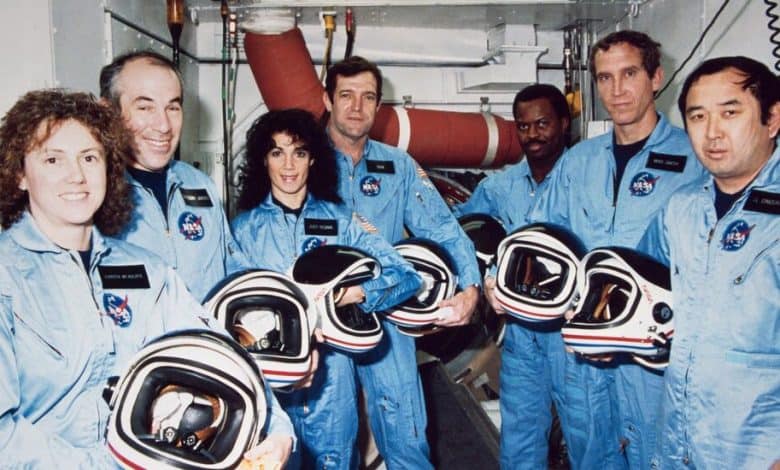What We Didn’t Learn From a Space Shuttle Disaster

CHALLENGER: A True Story of Heroism and Disaster on the Edge of Space, by Adam Higginbotham
My entry into the world was eclipsed, several days before I was born, by the story of four Americans who had temporarily left theirs to walk on the moon. Sixteen years later, I stood in a classroom of fellow space age kids around a bulky cathode-ray tube TV wheeled in on an A/V cart to watch the launch of the Space Shuttle Challenger.
Looking soft and white, the spacecraft (officially called an orbiter) rode on the back of a 10-story-tall tank full of liquid hydrogen and oxygen. On either side of the tank were two solid rocket boosters — basically giant metal tubes packed with a rubbery explosive that, once lit, burned until the fuel ran out, thrusting the orbiter out of gravity’s grip.
By January 1986, two dozen shuttle missions had taken place with minimal public interest — which was a problem for NASA. Lack of interest meant diminishing funds from an indifferent Congress, and you can’t jettison humans safely into space without money.
So NASA cooked up a public relations gambit to build excitement for its next mission. In the days and months leading up to Challenger’s 25th launch, the nation was fed a constant news diet about Christa McAuliffe, the first non-astronaut (and grade-school teacher) to ride into space.
Hence, the TV on the cart in the school library.
Most schoolchildren in the United States, like me, were officially skipping lessons to watch that launch. As Adam Higginbotham recounts in “Challenger: A True Story of Heroism and Disaster on the Edge of Space,” a mere 73 seconds after liftoff, the 526,000 gallons of liquid hydrogen and oxygen exploded, instantly blowing apart the orbiter. The reinforced cockpit carrying the seven crew members traced a two-minute arc over the Atlantic Ocean before smashing apart upon hitting the surface of the water.
